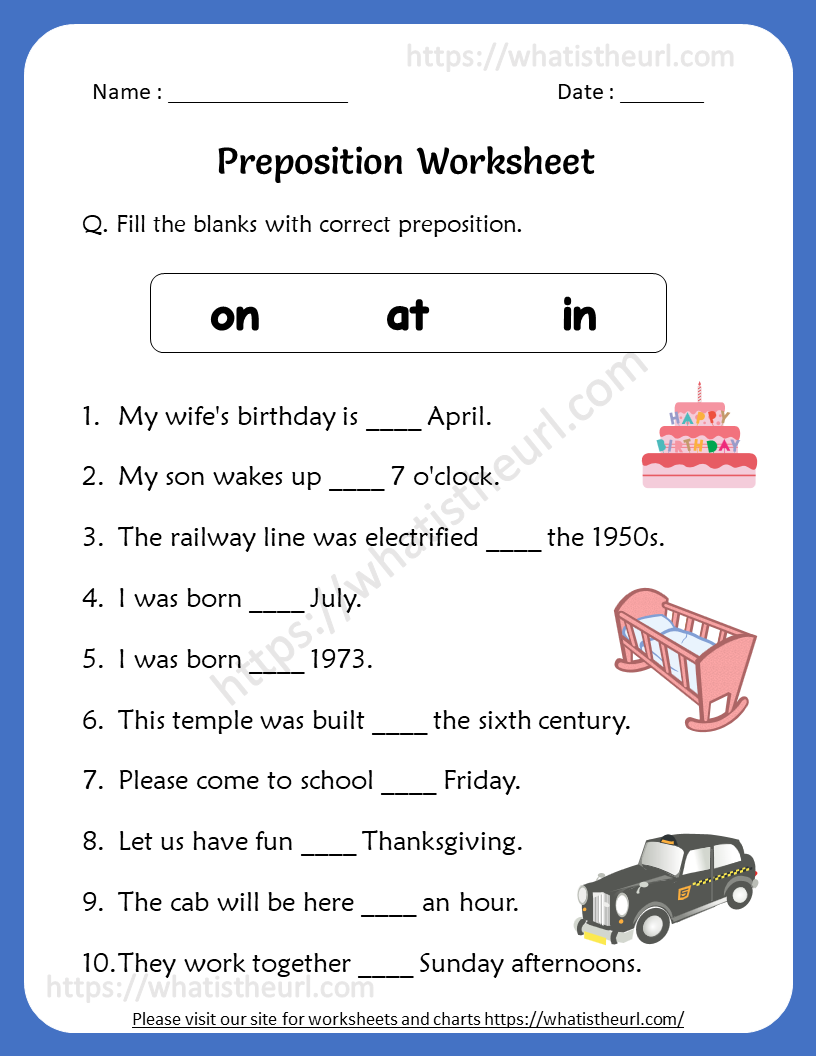5 Fun Preposition Worksheets for 1st Graders

The concept of prepositions might seem trivial, but mastering them can significantly improve a young learner's ability to understand spatial relationships and communicate effectively. Here are 5 fun preposition worksheets tailored for 1st graders that can help nurture their language skills in an engaging way:
The Prepositional Hunt

One of the most interactive and enjoyable ways to teach prepositions is through a scavenger hunt. This worksheet includes a series of clues that guide children to find objects placed in different prepositional positions around the classroom or home.
- Design clues that include prepositions like behind, under, next to, in front of, etc.
- Make sure the clues lead to everyday items so that children can visualize and practice these terms naturally.
Preposition Puzzle

Create a puzzle game where each piece depicts a scene involving prepositions. The aim is for the children to match the correct prepositional phrase with the appropriate image.
- Use simple, colorful illustrations showing objects in different relations (e.g., a cat on a box, a ball under a table).
- Encourage kids to say the preposition out loud when they match each piece.
The Preposition Maze

A maze can be a thrilling way to learn prepositions. Draw a large maze and insert simple instructions at various points that require the use of prepositions to navigate through it.
- Provide sentences like “Go up at the fork” or “Walk past the tree.”
- This not only teaches prepositions but also aids in directional and problem-solving skills.
Preposition Pictionary

Turn learning prepositions into a game of Pictionary. Split the kids into groups and provide them with cards containing prepositions. One child from each group will draw while the others guess the preposition based on the scene depicted.
- This game helps children to visualise prepositions and improves their teamwork and communication skills.
- Incorporate prepositions like through, around, across for added challenge.
Storytelling with Prepositions

Create a worksheet where children can fill in blanks to complete short stories, focusing on prepositions. These stories should depict common scenarios that children encounter daily, making the lesson more relatable.
- Include visuals with characters or animals in various prepositional relations.
- Ask children to illustrate the story once they’ve filled in the blanks, which reinforces learning visually.
📚 Note: Prepositions in stories or games must be used contextually to help children understand their application in real-life scenarios.
By integrating these fun activities into the teaching of prepositions, 1st graders can enjoyably learn an essential part of grammar. Not only will they grasp the meaning of prepositions, but they will also start using them correctly in sentences, leading to better communication skills.
Why is it important to teach prepositions to young learners?

+
Prepositions help children understand relationships between objects and their location, which is crucial for cognitive development and effective communication.
Can these worksheets be used in group settings?

+
Absolutely, many of these activities encourage group participation, enhancing social skills and collaborative learning.
How can parents reinforce prepositions at home?

+
Parents can incorporate prepositions into daily routines like describing where items are located during playtime or chores, reinforcing the learning from school.
Are these activities only useful for language development?

+
No, these activities also promote spatial awareness, fine motor skills through drawing, and logical thinking when following instructions or solving puzzles.
How can teachers assess if students have understood prepositions?

+
Teachers can use simple quizzes or observe how well children follow or give instructions involving prepositions during activities or games.